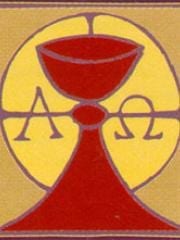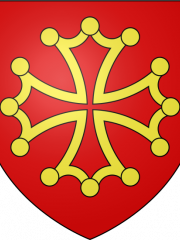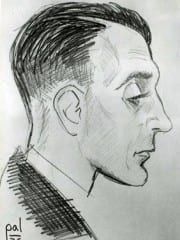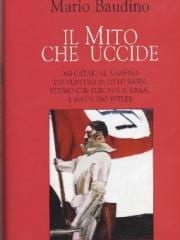Parsival
Fascination with the Grail
The reality behind the myth...
Sagas describe the Holy Grail as a chalice with fairy-tale powers; it’s been the inspiration for countless tales, legends and also works of art. And it is both a stranger to the Christian body of thought -- and yet somehow connected with Christianity in mysterious ways. What is it about the "Holy Grail"? Why is it still the subject for mainstream movies like Indiana Jones and the Last Crusade and The Fisher King? Is there something more substantial behind the Grail than simple legend? If we can delve deeper into the true meaning of the Grail, the core of many poems, legends, novels, and fairy tales may become apparent.
The more seriously someone undertakes to approach the subject "Grail" -- because he feels touched personally by it -- the more certainly will he come up against questions such as whether or not the knowledge about the Grail can be traced back to some revelation… A revelation handed down out of a mythical distant time, but weighed down, proliferated and falsified on its way through time, through the world and the life of countless generations. Let us begin at the beginning...
Holy Grail
Since the publication of The Da Vinci Code the debate rages as to what and where the true Holy Grail exists
Taken as a whole, the various renditions of the Holy Grail legend, whether they derive from Europe or Asia, imply that there are many forms that the Holy Grail can take.
These legends assert that the Holy Grail can be anything from the platter mentioned by Chrétien de Troyes, the first author of the Holy Grail legend, to the Cup of Christ alluded to by Robert de Boron, or even the Stone of Heaven mentioned by Wolfram von Eschenbach in Parzival.
Otto Rahn and the Quest for the Holy Grail
Otto Rahn (1904-1938), described as a gifted young author and historian, was one of this century's truly fascinating figures. Prior to his mysterious death, at age 35, he wrote two books about the Cathars of southern France: *Kreuzzug gegen den Gral* ("Crusade Against the Grail") and *Luzifers Hofgesinf* ("Lucifer's Court"). Legends continue to surround both his life and tragic death. While his books influenced such authors as Trevor Ravenscroft and Jean-Michel Angebert, they were never translated into English. In the 1982 best selling book *Holy Blood, Holy Grail*, Otto Rahn's name appears in a small but intriguing footnote. Otto Rahn believed that he had found the location of the Holy Grail Mountain, the Montsalvat of legend, in the Cathar mountain fortress of Montsegur in the French Pyrenees. He was, says Prof. Joscelyn Godwin, "largely responsible for the mythological complex that associated the Cathars and Montsegur with the Holy Grail and its Castle."
Norma Lorre Goodrich in her own highly acclaimed work *The Holy Grail* pays tribute to Otto Rahn's "Crusade Against the Grail" describing it as "a wonderful book, a monument to this German idealist author, who died mysteriously during a descent in the Alps."
Otto Rahn in Jones' Celtic Encyclopedia
b. February 18, 1904; Michelstadt, Germany.
d. March 13, 1939; Tyrolean Mts.
Poet, mystic, and Nazi researcher. Rahn was obsessed with two ideas--the Holy Grail and the Cathars, medieval French heretics; while in college, he had intended to write a dissertation on the hypothetical Kyot, the supposed troubador who gave Wolfram von Eschenbach the story of Parzival.
In 1929, he made a special trip to the Languedoc region of Southern France, a hotbed of Catharist activities in the thirteenth century. He began excavating at Montsegur, the last Cathar stronghold to fall to the Inquisition. Legend had it that the Cathars had a great treasure which was never found, but hidden deep in the mountainside. Rahn was convinced that this treasure was the Holy Grail, and he intended to find it.
Baudino Mario - IL MITO CHE UCCIDE. Dai catari al nazismo: l'avventura di Otto Rahn l'uomo che cercava il Graal e incontro Hitler
Alla fine degli anni Venti un giovane e brillante storico tedesco, Otto Rahn, giunge per la prima volta in Provenza, sulle tracce del Santo Graal, la mitica reliquia la cui storia è strettamente connessa con quella dell'eresia e della persecuzione dei càtari durante il Medioevo. Attraverso i meandri di questa vicenda, avvolta tra realtà e leggenda, l'autore ripercorre con ampio respiro narrativo una delle pagine più fosche della storia europea. Rahn finirà per essere cooptato dai dirigenti nazisti che intendono rilanciare il mito "ariano" del Graal, promuovendo vere e proprie spedizioni di ricerca anche dopo la misteriosa morte del giovane studioso, avvenuta nel 1938, a soli trentaquattro anni.
Dati 2004, 256 p., rilegato
Editore Longanesi
Raiders of the Lost Grail
Berlin between the wars was a city known throughout Europe for its bohemian subculture of young intellectuals. Amongst the personalities who hotly debated the many modernist “isms” that were fracturing the old ideological certainties which had glued together the 19th century, few individuals were more colourful than a dark-haired, green-eyed young man named Otto Wilhelm Rahn. His gaunt figure, swathed in characteristic black coat and fedora, casts a long shadow out of those twilight years, a ‘great silhouette’ around which the most extravagant myths accrued. He was variously said to be a Mason, a Rosicrucian, a Luciferian, an agent of the Thule Gesellschaft, an initiated Cathar and even the leader of an obscure, international secret society. As author Philip Kerr puts it, Rahn’s contemporaries might not have been surprised to see “the Scarlet Woman and the Great Beast come flying out of the front door” of his apartment on Tiergartenstrasse. One of his Nazi peers in Heinrich Himmler’s Black Order remarked in an internal memo that he “half suspected Rahn of being in league with the little people”. To this day, it is widely believed that this enigmatic young man knew the whereabouts of one of the most sacred relics in all Christendom – the Most High Holy Grail. But the truth is stranger still…
- « первая
- ‹ предыдущая
- 1
- 2
- 3
- 4







Последние комментарии
13 лет 17 недель назад
13 лет 17 недель назад
13 лет 17 недель назад
13 лет 17 недель назад
13 лет 20 недель назад
13 лет 26 недель назад